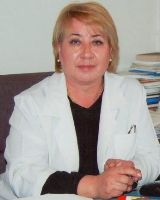POLYMORPHISM OF FOKI, TAQI, BSMI, APAI AND CDX2 RECEPTOR VITAMIN D (VDR) WITH SUSCEPTIBILITY TO PULMONARY TUBERCULOSIS: COMPARATIVE ANALYSIS
Abstract
Abstract. The main goal of the study was to determine the frequency of ApaI, TaqI, FokI, BsmI and Cdx2 in the Kazakh population. The purpose of this study is to identify the association of nucleotide substitutions in the VDR gene with a predisposition to pulmonary tuberculosis for the population of Kazakhstan. As a material for research, collections of DNA samples isolated from the peripheral blood of patients with pulmonary tuberculosis and healthy individuals of primary blood-grooming were used. Statistical processing was carried out using the χ2 criterion. Vitamin D modulates the activity of monocytes and macrophages in the body and plays an important role in the innate immunity to certain infections, including M. tuberculosis. In a meta-analysis, it was shown that a low level of vitamin D correlates with a high risk of tuberculosis. The work revealed statistically significant differences in the frequency of alleles and genotypes of the ApaI polymorphism (rs7975232) with the incidence of tuberculosis in ethnic Kazakhs. The presence of the ApaI allele has been shown to significantly reduce the risk of developing tuberculosis.
Keywords:
A gene vitamin D receptor, polymorphism FokI, TaqI, BsmI, ApaI and Cdx2, VDR, pulmonary tuberculosis.References
1. 25-hydroxyvitamin D and risk of myocardial infarction in men: a prospective study / E. Giovannucci, Y. Liu, B.W. Hollis et al. // Arch Intern Med. -2008. -Т.168. -P.1174-1180.
2. Glossmann, H.H. Origin of 7-dehydrocholesterol (provitamin D) in the skin / H.H. Glossmann // J. Invest. Dermatol. -2010. -Т. 130. -№8. –P. 2139–2141.
3. The presence of a polymorphism at the translation initiation site of the vitamin D receptor gene is associated with low bone mineral density in postmenopausal Mexican-American women / C. Gross, T.R. Eccleshall, P.J. Malloy et al. // J Bone Miner Res. -1996. -Т. 11(12). -P. 1850–1855.
4. Halsall, J.A. Vitamin D receptor gene polymorphisms, particularly the novel A-1012G promoter polymorphism, are associated with vitamin D3 responsiveness and nonfamilial susceptibility in psoriasis / J.A. Halsall, J.E. Osborne, J.H. Pringle // Pharmacogenet Genomics. -2005. -Т.15(5). -P.349–355.
5. Han, J. Polymorphisms in the MTHFR and VDR genes and skin cancer risk / J. Han, G.A. Colditz, D.J. Hunter // Carcinogenesis. - 2007. -Т.28. -P.390-397.
6. World Health Organization. Global tuberculosis report 2013. WHO Report 2013. Geneva: World Health Organization, 2013.
7. Schlingmann, K.P. Mutations in CYP24A1 and idiopathic infantile hypercalcemia / K.P. Schlingmann, M. Kaufmann, S. Weber // N Engl J Med. -2011. -Т.365. -P. 410–421.
8. Wolf, M. Vitamin D in patients with renal failure: a summary of observational mortality studies and steps moving forward / M. Wolf, R. Thadhani // J Steroid Biochem Mol Biol. -2007. -Т.103. -P.487–490.
9.Nuclear vitamin D receptor: natural ligands, molecular structure–function, and transcriptional control of vital genes / M.R. Haussler, G.K. Whitfield, C.A. Haussler et al.. // Academic Press. -2011. -Т.11. -P.137–170.
10. Association between vitamin D receptor gene polymorphism and nephrolithiasis / M. Ruggiero, S. Pacini, M. Amato et al. // Miner Electrolyte Metab. -1999. -Т. 25 (3). -P.185–190.
11. Survival of patients undergoing hemodialysis with paricalcitol or calcitriol / M. Teng, M. Wolf, E. Lowrie et al. // N Engl J Med. -2003. -Т.349. -P.446-456.
12. Wacker, M. Vitamin D - effects on skeletal and extraskeletal health and the need for supplementation / M. Wacker, M.F. Holick // Nutrients. -2013. -Т. 5. -№1. -P. 111–148.
13. Nnoaham, K.E. Low serum vitamin D levels and tuberculosis: a systematic review and meta-analysis / K.E. Nnoaham, A. Clarke // Int. J. Epidemiol. -2008. -Т. 37. -№1. -P. 113–119.
14. Crowle, A.J. Inhibition by 1,25(OH)2-vitamin D3 of the multiplication of virulent tubercle bacilli in cultured human macrophages / A.J. Crowle, E.J. Ross, M.H. May // Infect. Immun. -1987. -Т. 55. -№12. -P. 2945–2950.
15. 1α,25-Dihydroxy-3-epi-vitamin D3, a natural metabolite of 1α,25-dihydroxy vitamin D3: production and biological activity studies in pulmonary alveolar type II cells / V.K. Rehan et al. // Mol. Genet. Metab. -2002. -Т. 76. -№1. -P. 46–56.
16. Strong associations of 25-hydroxyvitamin D concentrations with all-cause, cardiovascular, cancer, and respiratory disease mortality in a large cohort study / B. Schöttker et al. // Am. J. Clin. Nutr. -2013. -Т. 97. -№4. -P. 782–793.
17. Кателицидины, витамин D и туберкулез / И.В. Беляева и др. // Вестник Санкт-Петербургского университета. -2013. -№3. -С. 3–18.
18. Hmama, Z. Quantitative analysis of phagolysosome fusion in intact cells: inhibition by mycobacterial lipoarabinomannan and rescue by an 1α,25-dihydroxyvitamin D3-phosphoinositide 3-kinase pathway / Z. Hmama, K. Sendide, A. Talal // J Cell Sci. -2004. -Т.117. -P.2131–2140.
19. 1α,25 Dihydroxyvitamin D3 modulated cytokine response in pulmonary tuberculosis / M. Vidyarani et al. // Cytokine. -2007. -Т. 40. -№2. -P. 128–134.
20. Yang, B.F. Meta-analysis of relationship of vitamin D receptor polymorphism and tuberculosis / B.F. Yang, C.L. Han // China Trop. Med. -2006. -Т. 6. -P. 1347–1349.
21. Gao, L. Vitamin D receptor genetic polymorphisms and tuberculosis: updated systematic review and meta-analysis / L. Gao, Y. Tao, L. Zhang // Int J Tuberc Lung Dis. -2010. -Т. 14(1). -P. 15-23.
22. Joshi, L. Serum vitamin D levels and VDR polymorphisms (BsmI and FokI) in patients and their household contacts susceptible to tuberculosis / L. Joshi, M. Ponnana, S.R. Penmetsa // Scand J Immunol. -2014. -Т.79(2). -P.113-119.



